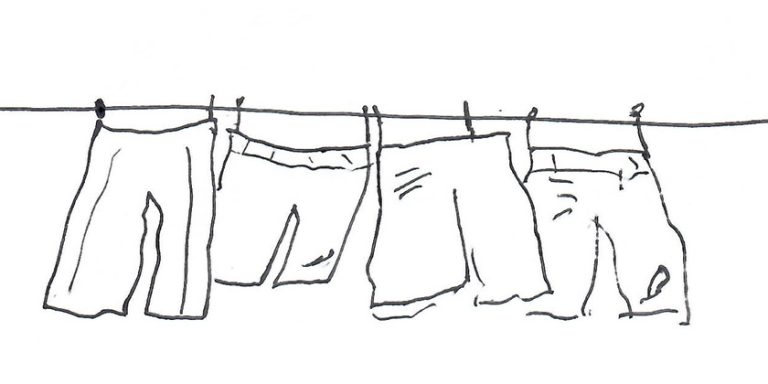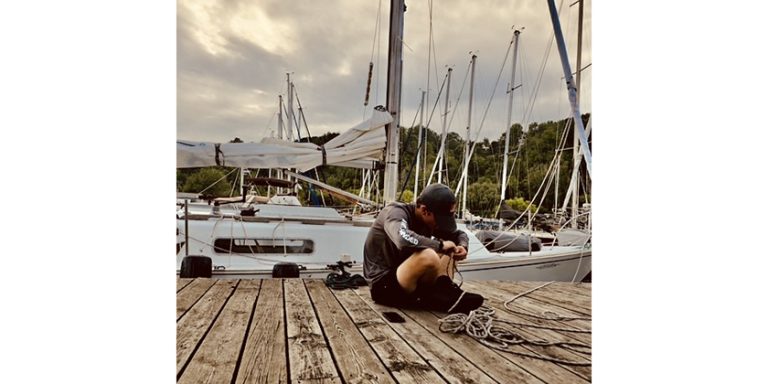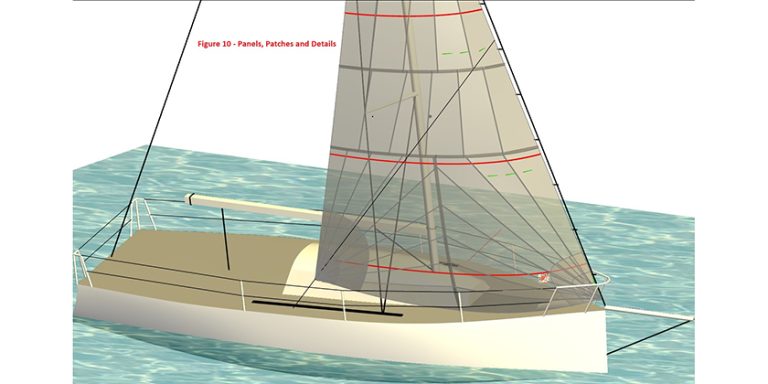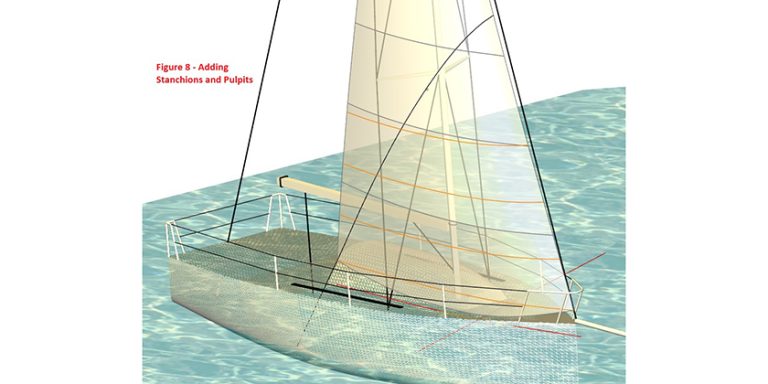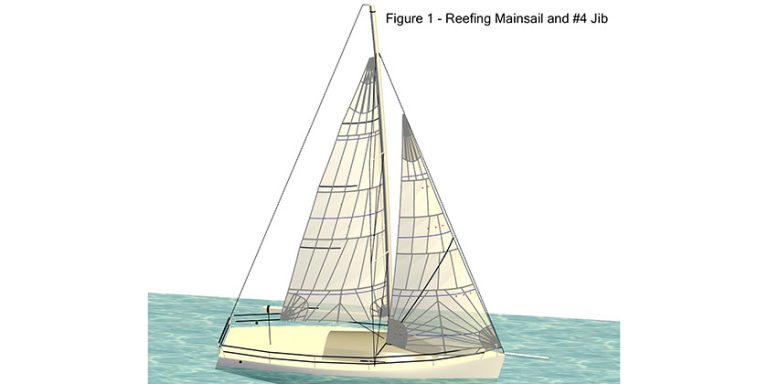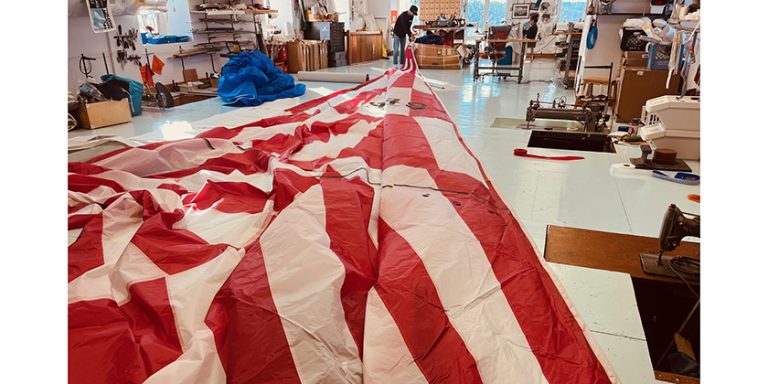Sail Techology: Choosing Woven Sailcloth for a Sail
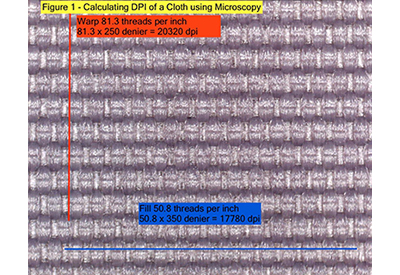
May 4, 2022
Even after 30 years in the business, I still love thumbing through the pages of Canadian Yachting magazine – the beautiful new boats, the latest electronics or sailing gear. I particularly like reading the advertisements describing something that I may or not know anything about. “Lighter, faster, stronger, brighter”. I am currently looking for some new salopettes and a spray jacket and the ad copy I’m looking for is “Dryer….and stays dryer”. I know how to keep my hiking and camping gear waterproof with lotions and potions, but I have never been as successful with my sailing gear. I think the liberal doses of salt water, half-hearted freshwater rinses and an aggressive scuffing by non-skid thwarts my attempts at staying dry. I’m pretty sure sunscreen does something particularly nasty to the waterproof coatings and neck seals.
Sailcloth makers also advertise their products, but a bit more discretely these days. I do remember when manufacturers would advertise their cloths in print magazines, but now it is on Instagram and in their online catalogues. Most of the info found in those catalogues covers the weight, the size of the yarns used, the finish type, and a guideline for how to use the cloth in sail production. This is great info but is more advertising and generalized comparisons rather than data points on performance.
For example:
Style: 5.5 All Purpose Weight: 5.1sm.oz/218g/m2 Construction: Warp 250 denier x Fill 350 denier
“Premium quality impregnated finish for increased bias stability and durability, high tenacity yarns with high sley dense construction.”
First is the name of the cloth, this one is called 5.5 All Purpose. This is only a name given by the cloth maker, and loosely associated with the overall weight of the cloth and the application recommended. This does not mean definitively that 5.5 All Purpose is lighter than 5.4 High Aspect.
This is where we look at the weight. I will make an early apology for the mixed metric and imperial units, but I didn’t come up with this system!
I will ignore Sailmakers Ounces (sm.oz) and go straight to the grams/square meter. A finished cloth weight of 218 gram per square meter, weighs less than the High Aspect 5.5 at 230 grams per square meter. Weight is important to get a comparison of finished bagged sail weight if the sail were made similarly. Weight does not directly relate to the performance, or even the shape holding as I define it.
Let’s look at some of the terms that are used in a sailcloth description. Denier is the first and it starts off a bit strange. Denier is the weight in grams for a 9,000m length of the yarn. In practice, the 9,000m piece of yarn isn’t even weighed, it is checked by a vibroscope that vibrates a 20mm piece of the yarn and the fundamental vibration frequency is measured allowing the mass to be calculated. At this scale, a small rounding error or measurement tool error makes a big difference. In our example, all this tells us is the size of the yarns that are woven in the warp (length of roll) and fill (width of roll). This tells us very little, since cloth can be woven very tightly or very loosely with those size yarns. What it does allow you to do is count the threads per inch and calculate the denier per inch (dpi) which allows you to know exactly how much yarn is able to work in primary cloth directions.
 Figure 1 – Determining DPI of a cloth using microscopy
Figure 1 – Determining DPI of a cloth using microscopy
This DPI information is generally only given with laminate cloth constructions, but is very useful for determining how woven cloth may react to load. I would be very happy if the cloth makers provided this information since it would save me using my desktop computer microscope to count threads and input the data into spreadsheets. This dpi data is one of the best non-testing methods for comparing different cloths for a given application. If I am looking at a radial cut furling genoa, I can go to some cloth constructions with 20,000 dpi of warp and 14,000 dpi of fill, but if I am doing a high aspect mainsail I can look for 19,000 dpi of warp and 26,000 dpi of fill which would be more appropriate for that panel layout and load demands.
This mechanical description of the cloth is helpful to narrow down the cloth choice, but if you ask the cloth makers nicely, they will send you test data for a new piece of cloth. This helps quite a bit, but I also have the cloth tested on an Instron extensometer. This i- house standardized test goes back to Steve Haarstick’s work in the 1970s through until his retirement in 2015 providing an enormous database of cloth constructions, finishes, and test strip data. The best thing about the physical tests isn’t the results of the new samples, which can be estimated by the construction dpi’s, but the impact flutter test results.
This is what the impact flutter does to the cloth sample. Some samples look a bit sad after this violent test.
{youtube}HZtg5vQTaHk{/youtube}
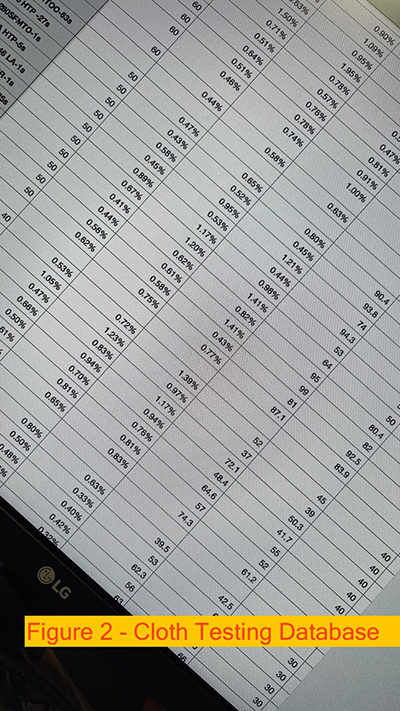 Figure 2 – Cloth Testing Database
Figure 2 – Cloth Testing Database
This impact flutter test data highlights the amount of degradation of the sailcloth stretch resistance with use. Some cloth will lose 18% of their initial strength, and others over 50%! This really shows that the quality of weaving and finishing makes a huge difference in sail performance with use. Because of this, it is usually not the best performing new sample max load numbers that are the best to use, but the cloth choices that lose less strength with use. Better aging cloth gives better and more consistent long term sail performance at the expected loading for the sail. Most sails spend most of their life idling around at half of peak loading, and infrequently hit max load.
So, back to the foul weather gear…. any suggestions?
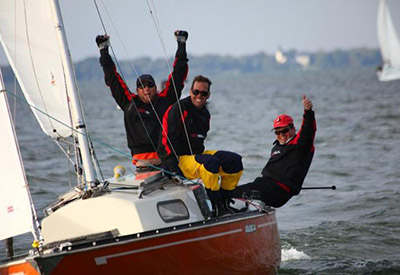 Keven Piper, two-time Shark 24 World Champion, founded Hamilton, ON-based Bay Sails in 1998. Email: baysails@gmail.com
Keven Piper, two-time Shark 24 World Champion, founded Hamilton, ON-based Bay Sails in 1998. Email: baysails@gmail.com

